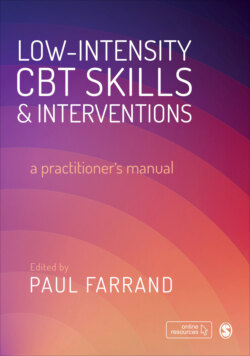Читать книгу Low-intensity CBT Skills and Interventions - Группа авторов - Страница 140
На сайте Литреса книга снята с продажи.
Procedural Reaching a Probable Diagnosis
ОглавлениеRead the case study and use the diagnosis decision support tool to reach the most probable diagnosis and determine the appropriate treatment. Provide a brief justification at each stage of the decision-making process.
Abdul is a 29-year-old man who has been feeling fatigued and had trouble sleeping. He presented to LICBT services for the first time with low mood. About a year ago he was promoted at work and is now responsible for a large team of people and has to pitch ideas to his chief executive and board at weekly meetings. The first time he did this he was acutely anxious. He was worried about messing it up and that both his subordinates and managers would think that he did not deserve his promotion and was not good enough to do the job. On that occasion he felt very hot, his heart was pounding and he could feel himself blushing, which made him much more anxious. He was worried that if the board saw that he was nervous, they would not believe he had confidence in what he was saying. He began breathing more quickly and felt nauseous, and he had to sit down. Abdul says that he struggled to cope with the situation and has since struggled through many similar situations, though the anxiety has been less intense than that first time. He has developed a few strategies to help him deal with these situations like having a bottle of cold water with him and tensing his legs under the desk as hard as possible to distract himself from his fears. All this has, however, been making him feel increasingly low in mood, fatigued and on occasions he has struggled to go in to work.
Complete Table 3.4
Table 3.4
Answers to Assessing Your Understanding questions can be found in the appendix on p. 334.
